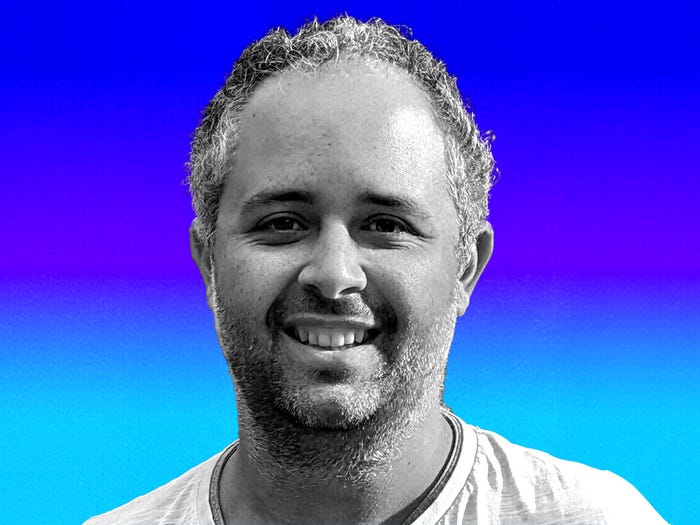At 25, he decided he didn’t want to be stuck in a job forever. Here’s how he was able to retire by 36.
5 min readAt 25, he decided he didn’t want to be stuck in a job forever. Here’s how he was able to retire by 36.

- Yaron Goldstein achieved financial independence at the age of 36.
- Goldstein’s strategy included mindful spending and investing a big portion of his income.
- He follows the 4% rule, which is common in the FIRE (financial independence, retire early) community.
Yaron Goldstein was 25 when he decided to start working toward financial independence.
Goldstein was working toward a Ph.D. in computational and advanced mathematics in Berlin, his hometown. While on a research internship in New York City in 2010, he connected with a Wall Street investment advisor who would become his unofficial mentor.
His mentor gave him a list of what he considered “required reading.” The list included Tim Ferriss’ “4-Hour Workweek” and Malcolm Gladwell’s “Outliers.'”
From his readings, Goldstein started to think about how happiness and money are related.
“This guy is making quite a good case for: Maybe 40 years from now, I don’t want to be the guy who focuses his whole life on doing a career,” he said about his reaction to reading Ferriss’ book.
Investing early
Over the next 10 years, Goldstein went on to work at Boston Consulting Group, Google, and Meta. His career took him from Tel Aviv and Zurich to Mountain View, California.
And while his career spanned continents and big-name companies, his ultimate goal was to not have to worry about money forever.
Investment-wise, he started off small. When he got his first job as a post-doctoral student at a university in Berlin, he started putting away a few hundred euros every month.
Goldstein’s first job out of academia was working for BCG in Berlin. He increased his contributions to between 1,000 and 1,500 euros a month.
In the summer of 2017, four years after he set off on his financial-independence journey, Goldstein devised a rough goal for his retirement years: He wanted to have a stable, risk-free income of 5,000 euros a month to live off of during his retirement.
He lived on about two-thirds of his income at the beginning of his career and later cut his expenses to about 50% of his income. He saved all his annual bonuses and stocks that were part of his salary. Goldstein kept about 10,000 euros in a bank account and invested everything else in stocks.
Mindful purchasing
Within seven years of starting his career as a data scientist, Goldstein more than doubled his salary. By 2020, he was making about 330,000 euros. As his salary rose, he put more money toward retirement.
He said the mindset that helped him came down to evaluating what gave him happiness and avoiding lifestyle inflation.
Before any purchases, he would ask himself: “Is there something else that would satisfy me in a similar way for a third of the price?”
He cited his passion for green tea as one example.
“Even if I buy luxury tea, which is $50 per 50 grams, at the end of the month, it’s still cheaper than going to Starbucks every single day and getting coffee,” Goldstein said. “But I have this much more exclusive thing in my life that gives me a lot of joy.”
He said he never bought a car because Berlin and Zurich, where he spent a big part of his career, both had strong public-transportation systems.
“I did not have this large or potentially huge expense, and I could put that money instead in the stock market,” he said of his decision to remain car-free.
Goldstein said luck also played a role in jumpstarting his investments. He was an early investor in Tesla and put a “huge amount” of his net worth into Tesla stock in 2016, which rallied after the launch of Model X. He said he also spent many years of his career in Switzerland, where taxes are very low.
Retirement approach
Goldstein retired in May 2023, about 10 years after he first began earning money.
He follows the 4% rule, which is common in the FIRE — financial independence, retire early — community and which suggests it’s safe to withdraw about 4% of your total portfolio in each year of retirement. It aims to help retirees find a safe withdrawal rate but should be customized depending on the number of years expected in retirement, according to Vanguard.
Jamila Souffrant, who set herself a seven-year retirement goal when she turned 33, approached early retirement in a similar way. A key component of her plan was putting her money to work.
“I realized that, while saving is good and important, it’s not going to get me to wealth or financial independence,” Souffrant previously told BI. “I was losing out by not investing.”
Souffrant and her husband, who have three children, set up automatic contributions from their paychecks to their investment and retirement accounts, which forced them to manage with the remaining.
Others who have reached FIRE reject the 4% rule, saying it amounts to an unnecessarily large number.
Lauren and Steven Keys quit full-time work in their 20s but continue to work on side gigs. “So this idea of needing 25 times your annual expenses to feel like you can quit your full-time job became kind of laughable to us,” Steven previously told BI about the 4% rule.
Adjusted for taxes, Goldstein says he aims to live on 3% of his portfolio a year, which he believes can last him the rest of his life, especially if he’s “more frugal” in his early retirement years.
“No one can ever force you to say success means joining a big company and staying there for 40 years and going up the career ladder,” he said.
Discover more from Slow Travel News
Subscribe to get the latest posts sent to your email.



